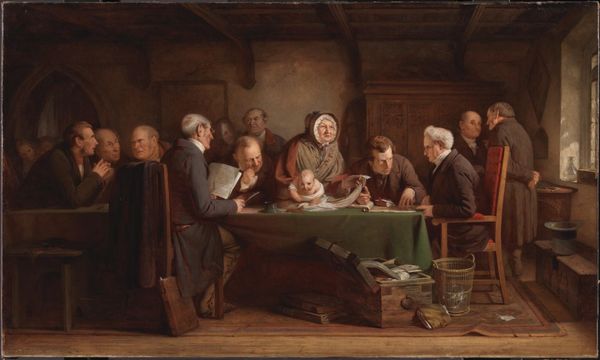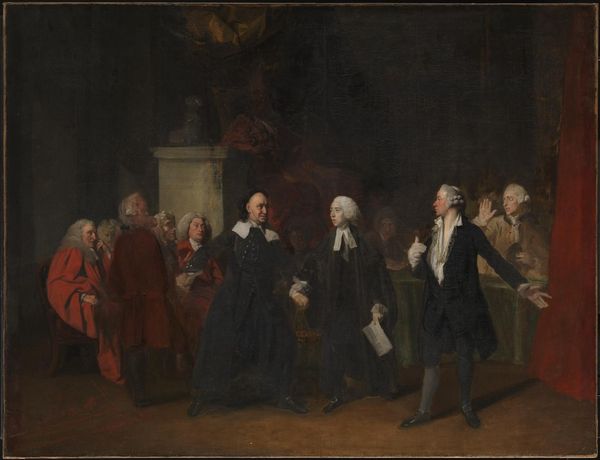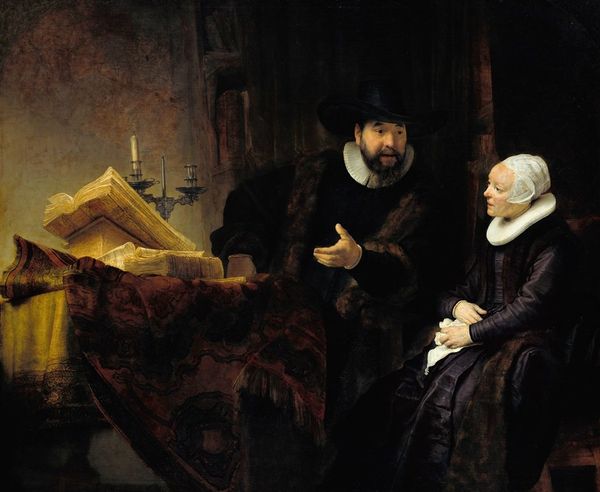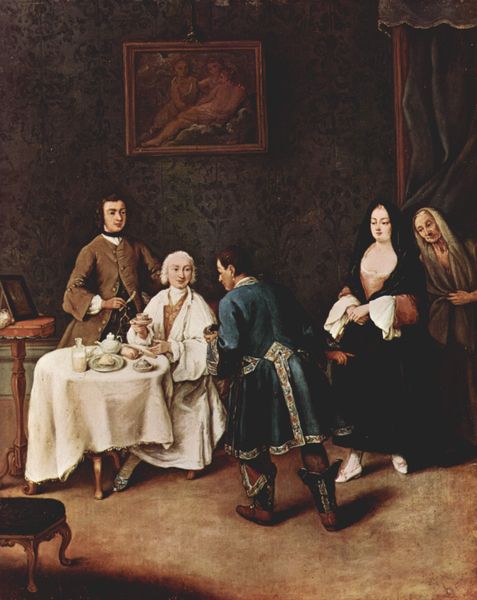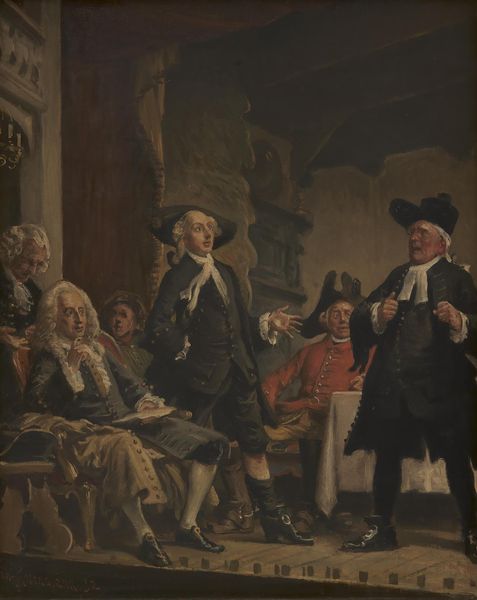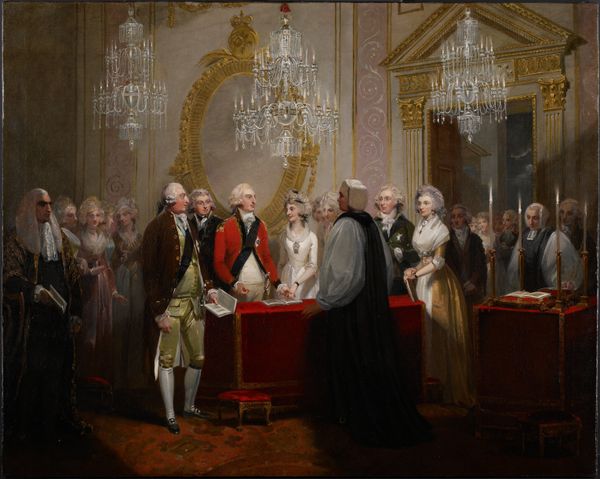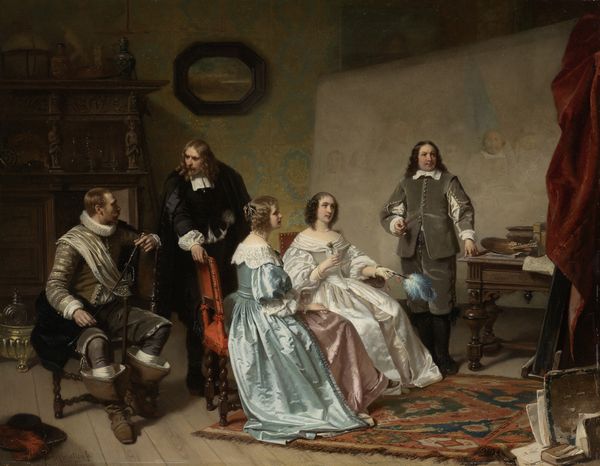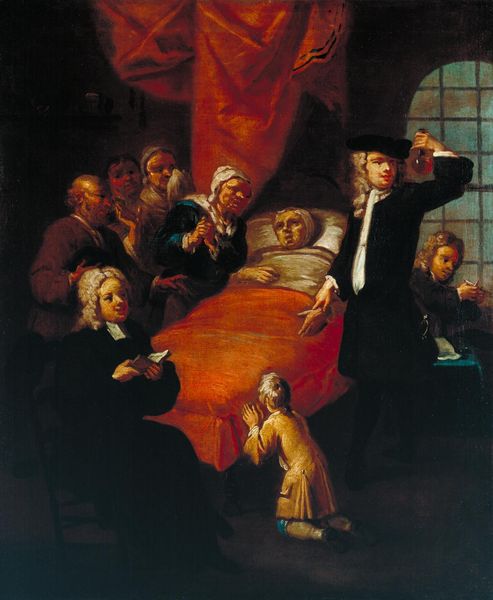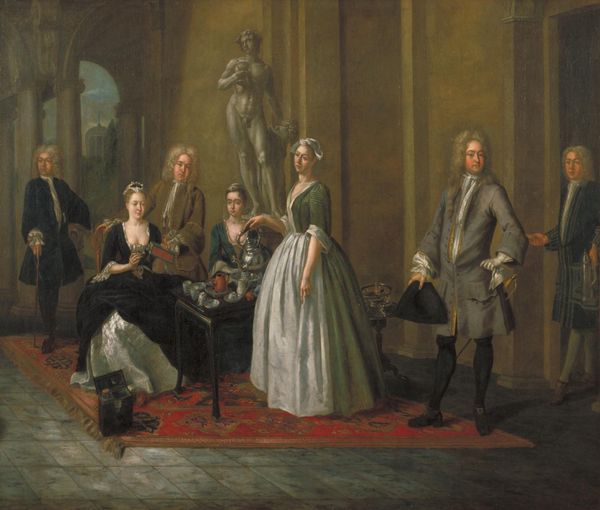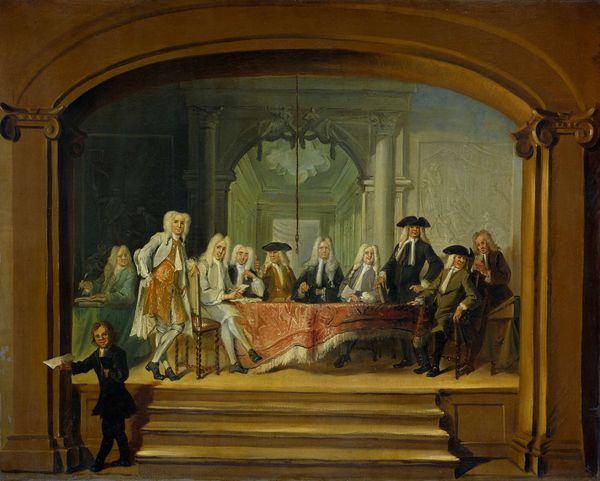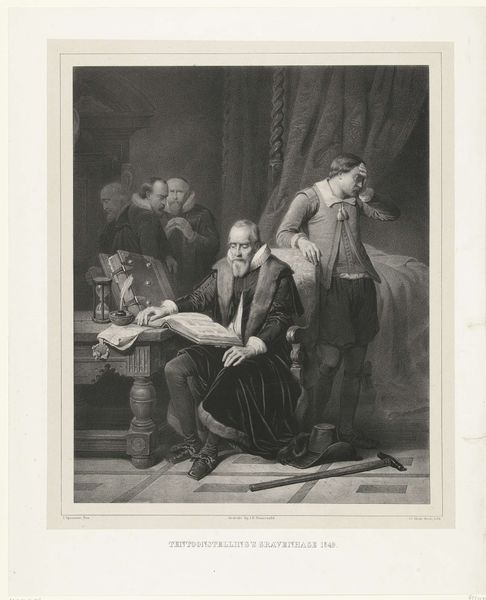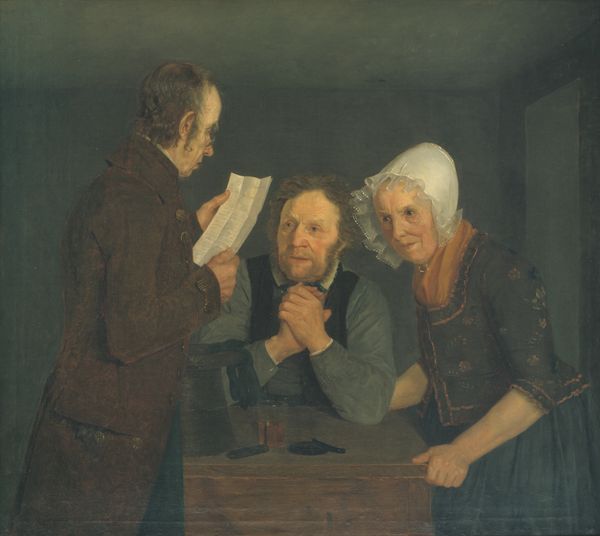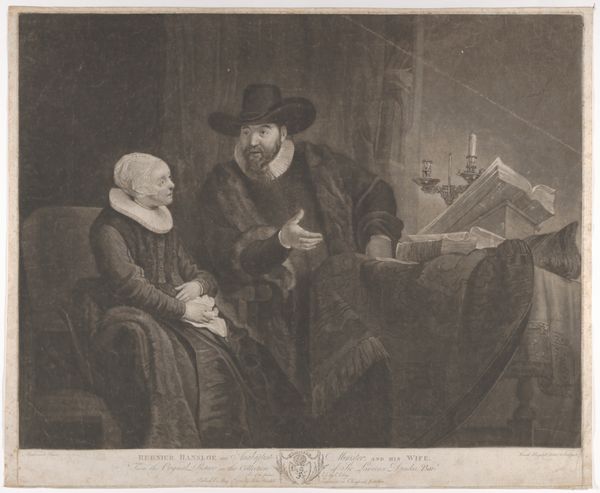
Dimensions: height 108.2 cm, width 83 cm, thickness 3.9 cm, depth 13.5 cm
Copyright: Rijks Museum: Open Domain
Editor: Here we have Simon Opzoomer's "The Last Prayer of Johan van Oldenbarnevelt," an oil painting dating from between 1840 and 1878. It depicts a rather somber scene. Van Oldenbarnevelt kneels, surrounded by figures in dark clothing. What strikes you most about this piece? Curator: The material reality behind this history painting speaks volumes. Consider the pigments Opzoomer chose. The pervasive darkness wasn’t merely stylistic; it likely reflected the limited access to lightfast pigments available at the time. And the figures themselves—notice the emphasis on the dark woolen fabrics they wear. Wool production was central to the Dutch economy, shaping its class structure. Is Opzoomer drawing parallels between individual fate and the wider economic structures? Editor: That’s a compelling point! The focus on the materiality really changes how you read the painting. Were there cheaper fabrics that would have shown up differently? Curator: Precisely. Poorer quality textiles would take dyes differently. But here, we see the stark, sombre blacks – a display of mercantile wealth used to render this scene. Moreover, oil paint itself was becoming increasingly standardized and commercially available. It facilitated the rapid production and wider distribution of images like this. Editor: So, the painting isn’t just about a historical event; it’s also about the materials used to depict that event and their societal implications. Does the choice of oil paint suggest something about the painting's intended audience or the artistic values of the time? Curator: Exactly! The rise of oil paint, the mass market of dyes, and the value of clothing… This history painting subtly reveals the machinery behind image making and how cultural narratives are materially constructed and consumed. Editor: I never considered how materials themselves could carry such historical weight. Thank you; I'll never look at a painting the same way. Curator: It is a pleasure to think of the painting in those terms with you. Now to move onto the next artwork!
Comments
No comments
Be the first to comment and join the conversation on the ultimate creative platform.
